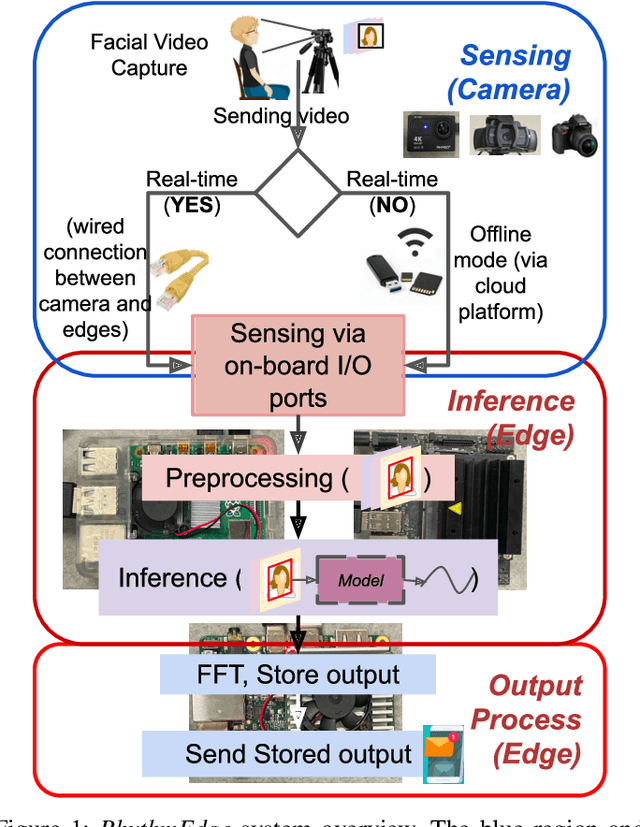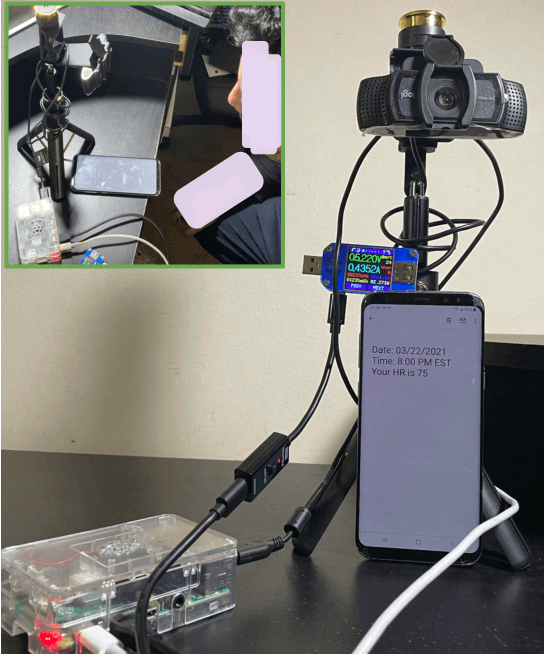Sreenivasan Ramasamy Ramamurthy
HeteroEdge: Addressing Asymmetry in Heterogeneous Collaborative Autonomous Systems
May 05, 2023



Abstract:Gathering knowledge about surroundings and generating situational awareness for IoT devices is of utmost importance for systems developed for smart urban and uncontested environments. For example, a large-area surveillance system is typically equipped with multi-modal sensors such as cameras and LIDARs and is required to execute deep learning algorithms for action, face, behavior, and object recognition. However, these systems face power and memory constraints due to their ubiquitous nature, making it crucial to optimize data processing, deep learning algorithm input, and model inference communication. In this paper, we propose a self-adaptive optimization framework for a testbed comprising two Unmanned Ground Vehicles (UGVs) and two NVIDIA Jetson devices. This framework efficiently manages multiple tasks (storage, processing, computation, transmission, inference) on heterogeneous nodes concurrently. It involves compressing and masking input image frames, identifying similar frames, and profiling devices to obtain boundary conditions for optimization.. Finally, we propose and optimize a novel parameter split-ratio, which indicates the proportion of the data required to be offloaded to another device while considering the networking bandwidth, busy factor, memory (CPU, GPU, RAM), and power constraints of the devices in the testbed. Our evaluations captured while executing multiple tasks (e.g., PoseNet, SegNet, ImageNet, DetectNet, DepthNet) simultaneously, reveal that executing 70% (split-ratio=70%) of the data on the auxiliary node minimizes the offloading latency by approx. 33% (18.7 ms/image to 12.5 ms/image) and the total operation time by approx. 47% (69.32s to 36.43s) compared to the baseline configuration (executing on the primary node).
Demo: RhythmEdge: Enabling Contactless Heart Rate Estimation on the Edge
Aug 13, 2022

Abstract:In this demo paper, we design and prototype RhythmEdge, a low-cost, deep-learning-based contact-less system for regular HR monitoring applications. RhythmEdge benefits over existing approaches by facilitating contact-less nature, real-time/offline operation, inexpensive and available sensing components, and computing devices. Our RhythmEdge system is portable and easily deployable for reliable HR estimation in moderately controlled indoor or outdoor environments. RhythmEdge measures HR via detecting changes in blood volume from facial videos (Remote Photoplethysmography; rPPG) and provides instant assessment using off-the-shelf commercially available resource-constrained edge platforms and video cameras. We demonstrate the scalability, flexibility, and compatibility of the RhythmEdge by deploying it on three resource-constrained platforms of differing architectures (NVIDIA Jetson Nano, Google Coral Development Board, Raspberry Pi) and three heterogeneous cameras of differing sensitivity, resolution, properties (web camera, action camera, and DSLR). RhythmEdge further stores longitudinal cardiovascular information and provides instant notification to the users. We thoroughly test the prototype stability, latency, and feasibility for three edge computing platforms by profiling their runtime, memory, and power usage.
 Add to Chrome
Add to Chrome Add to Firefox
Add to Firefox Add to Edge
Add to Edge